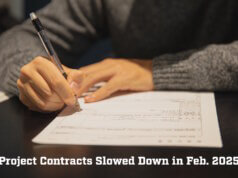
Managing Director
Singhi Advisors
There is a rising anticipation in the industry that the new government will work seriously and positively to eliminate the multiple roadblocks like delays in approvals, land acquisition, and environment clearances. The first thing the government should do is to unlock infrastructure projects from decision paralysis, feels Mahesh Singhi, Managing Director, Singhi Advisors.
India and China are always clubbed together as emerging economic superpowers. But if China has outpaced India in this race in recent years, the prime reason is nothing but India’s permanent deficit in infrastructure funding.
The Planning Commission had projected Rs. 51 lakh crore as projected investment during the 12th Plan period, and 47 per cent of the same should come from the private sector. The previous government set the pace for it by pushing public-private partnerships. But the recent policy stagnation, coupled with clogged approvals and confrontationist tax norms, have affected the momentum. Projects worth Rs. 7 lakh crore are stuck and as per some calculations, project bottlenecks cost the government at least 2 per cent of its GDP annually.
The new government, taking further its promises in the manifesto, has made its intentions clearer through the Presidential Address to Parliament by vowing to give the much-needed boost to infrastructure. The government has laid out a 10-year development programme with investment-friendly and definitive PPP mechanism. The promises include single window clearance, diamond quadrilateral project of high-speed trains, port-led development, low-cost airports in smaller towns etc.
Assuming that the budget allocation remains the same, the onus now will be on the private sector to bridge the gap in infrastructure funding. And the private sector is willing to rise up to the challenge and participate in infrastructure development, which is the key imperative for economic growth.
Investor confidence
There is a rising anticipation in the industry that the new government will work seriously and positively to eliminate the multiple roadblocks like delays in approvals, land acquisition, and environment clearances. The first thing the new government should do now is to unlock infrastructure projects from decision paralysis. Foreign investors are already prepared to flood India with money. As per a recent Assocham report, foreign investment in FY15 could be double of what was received in FY14.
As per our own analysis, infrastructure sector will attract majority of these funds. In M&A space, there will be both types of deal taking place, distress sale and new investment. Investors will be excited to invest in BOT/BOOT projects which are offering 15 per cent ROE/IRR, be it in roads, power transmission, generation, urban infrastructure etc.
Compared to the rivals, India lags behind on more than one count when it comes to government commitment to infrastructure. India needs a sustainable and more innovative financial means to spur infrastructure funding.
In Brazil, the Brazilian Development Bank (BNDES) provides loans directly to companies investing in infrastructure, guarantees and gives securities underwriting. In China, local governments have been one of the major drivers behind China’s infrastructure. State-owned commercial banks and policy banks hold around 80 per cent of total infrastructure loan portfolios, and bank financing accounts for more than 50 per cent of total infrastructure financing. China has many infrastructure SPVs listed in the stock market.
EPC model
Road sector is one of the key areas of infrastructure to witness buzz in the coming days and receive large funds. There will be strong activity in M&A space going forward because larger developers are keen to acquire project from companies who are not able to complete projects on time due to cash crunch. Also, there is lot of interest from PE funds like IDFC, ICIC etc. to buy operating road assets with strong ROE and IRR.
Internal trends in the sector are also to be watched out. The National Highways Authority of India is keen on changing its policy to EPC model, as most road projects on BOT, BOOT and PPP model are in the red.
EPC model made a comeback in FY14. Between FY01-06, 70 per cent of the projects were awarded on an EPC basis in the roads sector. FY07-13 saw 80-100 per cent of the projects being awarded on a BOT basis. However, given the high leverage of the private sector and reduced willingness of banks to lend, 20 BOT road projects worth Rs. 27,000 crore totalling 2,900 km did not receive any bids between March-October 2013. Thus, the EPC model made a comeback in FY14, with 500 km of projects being awarded vs. 220 km on BOT-Toll basis.
Large EPC contractors are likely to bid with a 12-14 per cent margin. We believe EPC projects will be a drain on NHAI resources with more personnel required to monitor projects vs. a BOT road. But NHAI‘s long-term objective will be to carry both models together. Large developers with strong balance sheets like Larsen & Toubro, IRB, IL&FS Transport, Sadbhav Engineering and Essel (Zee Group) would bid for BOT projects whereas small contractors will prefer EPC route as they have burn their hands in BOT model.











